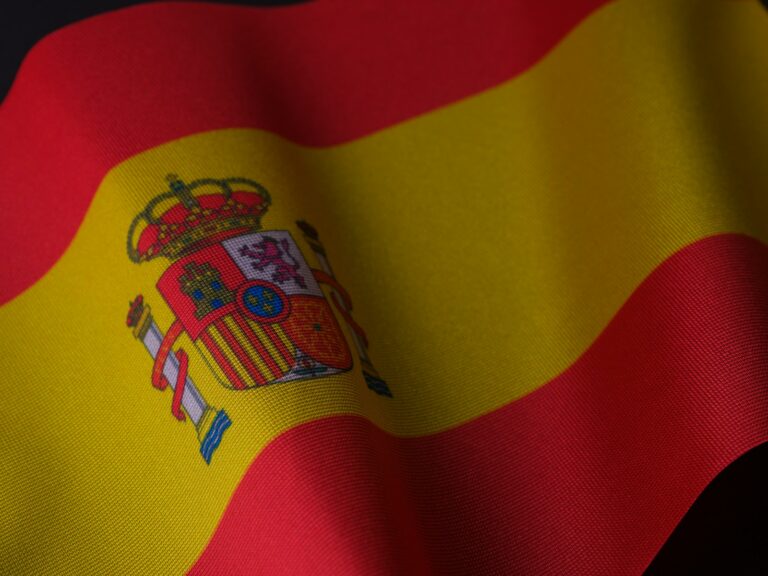What Does “Que Paso” Mean In Spanish? Uncover Its True Usage Today
Picture this: you’re strolling through a bustling market in Mexico City, the air filled with the tantalizing aroma of street food and the vibrant colors of handmade crafts. Suddenly, you hear someone say, “¿Qué pasó?” You freeze for a moment, wondering what it means and why it seems so important.
If you’ve ever found yourself in a similar situation, you’re not alone. ¿Qué pasó? is one of those phrases that pops up in everyday conversation, yet it can leave non-Spanish speakers scratching their heads. It’s more than just a simple question; it’s a doorway into understanding the rhythm and flow of Spanish communication.
The Basic Meaning of “Que Paso”

Ever heard a friend say “¿Qué pasó?” and wondered what it means? It’s one of those versatile phrases in Spanish, translating to “What happened?”. But there’s more to it, right? Let’s jump into how this phrase fits into everyday Spanish conversations and why it’s handy to know.
Literal Translation: “What happened?”
The most straightforward meaning of “¿Qué pasó?” is “What happened?”. It’s a quick way to ask for details about an event or situation. Imagine you’re meeting a friend after the weekend, and you want the lowdown on their adventures—“¿Qué pasó?” sums it up perfectly.
Contextual Uses in Everyday Spanish
“¿Qué pasó?” isn’t just a straightforward question. Depending on the scenario, it can take on different vibes.
As a Greeting
In many Latin American countries, people use “¿Qué pasó?” the same way you’d ask, “What’s up?” or “How’s it going?” It’s casual, friendly, and invites the other person to share what’s new. Next time you want to add a bit of flair to your greetings, try dropping “¿Qué pasó?” into your mix.
To Express Concern
Ever hear an ambulance and immediately think of a loved one? Using “¿Qué pasó?” conveys that same level of concern and empathy. If a friend looks upset or there’s been an incident, asking “¿Qué pasó?” shows you care and want to understand what they’re going through.
Common Variations and Spellings
When it comes to language, people love their variations. “¿Qué pasó?” is no different. You might see or hear it without the accent, “Que paso”, which leans informal. While “¿Qué pasó?” with the accent on the “o” remains standard.
Here’s a quick comparison:
Phrase | Meaning | Use Case |
|---|---|---|
“¿Qué pasó?” | What happened? | Formal, general, versatile |
“¿Que paso?” | What happened? | Informal, casual |
“¿Qué pasó?” | What happened? | Slightly more informal |
Why should you care? Because knowing these nuances can make your Spanish conversations more authentic and connect with native speakers in a meaningful way.
¿Qué Pasó?: Breaking Down the Phrase
Ever found yourself puzzled by the Spanish phrase ¿Qué pasó?? This simple yet multifaceted question translates to “What happened?” In conversations, it conveys curiosity, concern, or a prompt to share details. Let’s unpack this phrase by diving into its components.
“Qué” – Meaning and Usage
The word qué is a versatile interrogative pronoun in Spanish, meaning “what.” It’s your go-to word for asking about the identity, nature, or specifics of something. Think about these everyday uses:
Qué zeroes in on the essence of the inquiry, prompting answers that bring clarity. Next time you’re curious in a Spanish conversation, remember qué is your linguistic magnifying glass.
“Pasó” – Past Tense of “Pasar”
Then we have pasó, which is rooted in the verb pasar. This verb means “to happen” or “to pass,” and pasó is its third person singular form in the preterite tense. This indeed deals with completed actions from the past. Here are some illustrations:
By using pasó, you succinctly refer to incidents or experiences that are done and dusted, no ambiguity. It’s like pressing the rewind button.
Grammar Basics: When and How to Use “¿Qué Pasó?”
When and how should you drop ¿Qué pasó? into your conversations? Imagine this:
You come home, and your friend looks flustered. You ask, ¿Qué pasó?, and instantly, they spill the details of their hectic day – from missing the bus to finding a lost wallet.
In essence, ¿Qué pasó? is your conversational Swiss knife, ready to unfold scenarios and narratives from the past. Use it when you’re genuinely interested in someone’s story, or simply want to bridge a gap in the conversation.
Here’s a quick guide for reference:
Spanish | English | Context |
|---|---|---|
¿Qué pasó? | What happened? | General inquiry about a past event |
¿Qué hiciste? | What did you do? | Specific action inquiry |
¿Qué viste? | What did you see? | Inquiry about observations |
So, next time you’re exploring a Spanish dialogue, confidently ask ¿Qué pasó? and open the gate to intriguing anecdotes. Now you’re not just speaking the language, you’re connecting with people.
Using “Que Paso” in Different Situations

¿Qué pasó? is a versatile Spanish phrase that helps you connect in various contexts. Whether chatting with friends, showing concern, or getting updates, this phrase fits right in.
Casual Conversations with Friends
When you greet friends, you often aim for laid-back and friendly. ¿Qué pasó? works like “What’s up?” or “How are you?” It opens conversations by showing interest in their lives. For instance, bumping into a buddy at a coffee shop, you might say, “Hey, ¿qué pasó?” They’ll feel your genuine curiosity.
Expressing Surprise or Concern
Using ¿Qué pasó? in response to unexpected news shows empathy and concern. Imagine a friend tells you they’ve been laid off. Responding with “¿Qué pasó?” captures your shock and invites them to share more. The phrase acknowledges their situation, creating a space for deeper dialogue.
Asking About Recent Events
Use ¿Qué pasó? to catch up on what you missed. Say a colleague was out sick. On their return, you might ask, “¿Qué pasó?” to learn about their absence. This helps you stay informed and connected. It’s a straightforward way to jump into recent events and understand the context.
Regional Differences in Usage
While ¿Qué pasó? is common, some regions have variations. For example, in Mexico, it is widespread in conversations. In Spain, you might hear “¿Qué ha pasado?” which means the same but uses a different tense. Being aware of these differences can elevate your language skills and show cultural respect.
Context | Example Phrase |
|---|---|
Casual Greeting | “Hey, ¿qué pasó?” |
Expressing Surprise/Concern | “¿Qué pasó?” |
Asking About Recent Events | “¿Qué pasó?” |
Regional Variation (Spain) | “¿Qué ha pasado?” |
To seamlessly blend ¿Qué pasó? into your conversations, feel the pulse of the interaction. Know when to be casual, show concern, or just get updated.
“Que Paso” vs. Similar Spanish Phrases
Understanding ¿Qué pasó? gives you an edge in conversations. Knowing when and how to use it helps in sounding more like a native speaker. Let’s compare it with other similar Spanish phrases so you can get it right every time.
“Que Paso” vs. “Que Pasa”
“Que Paso” and “Que Pasa” might sound similar, but they serve different purposes. “Que Paso” asks about a specific past event, like “What happened?” On the other hand, “Que Pasa” inquires about the current state of things, similar to “What’s going on?”
Past vs. Present Tense
¿Qué pasó? uses the past tense. It checks on past actions or events. For example, “¿Qué pasó en la fiesta?” asks about what happened at the party.
¿Qué pasa? uses the present tense. It seeks information about the present. When you ask, “¿Qué pasa en la ciudad?”, you’re inquiring about current events in the city.
When to Use Each Phrase
Use ¿Qué pasó? when you’re curious about past occasions. If a friend mentions a good time at a concert, ask “¿Qué pasó en el concierto?“
Turn to ¿Qué pasa? when you want to know about ongoing activities. If your coworker seems distracted, ask “¿Qué te pasa?” to check in.
“Que Paso” vs. “Que Tal”
¿Qué tal? is another versatile phrase. Unlike ¿Qué pasó? which looks into past events, ¿Qué tal? often checks on well-being or the quality of something. It equates to “How’s it going?” or “How was it?”
If you’re testing a new recipe, a friend might ask “¿Qué tal la comida?” waiting for your feedback on the food. This differs from ¿Qué pasó?, which dives into the events of your cooking session.
“Que Paso” vs. “Como Estas”
¿Cómo estás? is a common greeting, asking “How are you?” It gauges someone’s current state, different from ¿Qué pasó? which focuses on specific past happenings.
Imagine meeting a friend you haven’t seen for a while. You’d likely start with “¿Cómo estás?” to establish how they feel before diving into “¿Qué pasó?” to catch up on the details of their life since you last met.
Phrase | Translation | Context |
|---|---|---|
¿Qué pasó? | What happened? | Past events |
¿Qué pasa? | What’s going on? | Current state |
¿Qué tal? | How’s it going? | General check |
¿Cómo estás? | How are you? | Well-being |
Responding to “Que Paso” in Spanish
Wondering how to reply when someone asks “¿Qué pasó?” in Spanish? Here’s a friendly guide to common responses and variations, making your conversations smooth and enjoyable.
Common Casual Responses
Casual responses are perfect for everyday interactions. You don’t need to jump into details, just keep it simple and relatable.
Nada (Nothing)
Most people use this to signal that nothing major has happened. It’s like saying “Not much” in English. If asked how your day was and it was uneventful, a quick “Nada” will do the trick.
Todo bien (All good)
This answer fits when everything’s fine. Similar to “I’m good,” Todo bien tells the other person that things are okay, no issues. It’s a great go-to response if you’re in a hurry.
Elaborating on Your Response
Sometimes, you’ll want to share a bit more. Here are some options:
Regional Variations in Replies
Responses to ¿Qué pasó? vary by region, adding flavors to your conversations. Knowing these can help you sound more like a native.
Quick Reference Table
Here’s a table summarizing the common responses to ¿Qué pasó?:
Response | Translation | Usage |
|---|---|---|
Nada | Nothing | When nothing significant happened |
Todo bien | All good | When everything’s fine and there’s no major issue |
Estoy cansado/a | I’m tired | When you’re feeling fatigued |
He tenido un buen día | I’ve had a good day | When you want to share a positive experience |
¿Qué onda? | What’s the vibe? | Informal, common in Latin America |
Understanding how to respond to ¿Qué pasó? can make your Spanish conversations more natural and engaging.
Cultural Significance of “Que Paso”
The phrase “Que paso” holds a unique charm in Spanish that conveys familiarity and connection. Ever wondered what makes it so special?
Role in Spanish-speaking Communities
“Que paso” isn’t just a phrase; it’s a key to community bonding. Among friends and families, you’ll hear it often, creating a warm, informal atmosphere. People use it to greet each other, showing care for one’s daily life. It’s like saying, “What’s the scoop?”.
Usage in Different Spanish-speaking Countries
From Mexico to Spain, “Que paso” pops up everywhere but with subtle twists. Let’s jump into how its usage varies across regions.
Mexico and Central America
In Mexico and Central America, “Que paso” often kicks off lively chats. Ever heard of “¿Qué onda?”? It’s a similar phrase meaning, “What’s the vibe?”. When you hear “Que paso”, expect someone genuinely interested in your past or present happenings.
South America
South Americans might greet you with “Que paso”, particularly in Mexico, Argentina, and Chile. Here, it’s a gateway to jump into personal stories and local news. You might catch locals asking, “Have you ever…?” this phrase when they want to catch up or share news.
Spain
In Spain, the culturally rich “Que paso” enters casual bistros and bustling streets. Spaniards use it to show genuine surprise or concern. Imagine hearing “Que paso” after sharing some news. It’s their way of saying, “Tell me more!” or “What happened?”.
Quick Usage Guide Across Regions
Region | Common Phrases | Context |
|---|---|---|
Mexico & Central America | ¿Qué onda? | Informal greeting or inquiry about news |
South America | Hola, ¿qué paso? | Casual queries among friends |
Spain | Que paso | Expresses surprise and curiosity |
Using “Que paso” connects you deeply with Spanish-speaking cultures, making every conversation warmer and more personal.
Tips for Using “Que Paso” Like a Native Speaker

Want to sound like a native Spanish speaker? Mastering the phrase “¿Qué pasó?” can help you connect deeply with Spanish-speaking friends. Let’s jump into some tips to use this phrase naturally.
Understanding Context and Tone
Context: “¿Qué pasó?” can fit many situations. For instance, it works when asking about a recent event, checking on someone’s well-being, or showing surprise. Suppose a friend seems upset. You’d ask “¿Qué pasó?” to show empathy and ask what’s wrong.
Tone: Tone transforms your words. A concerned tone shows genuine interest, whereas a casual tone keeps it light. Imagine seeing a friend looking down. A gentle “¿Qué pasó?” tells them you care, while a casual tone might be better if you’re just catching up.
Body Language and Gestures
Body Language: Pair “¿Qué pasó?” with open, attentive body language. Facing the person, maintaining eye contact, and nodding as they speak show you’re engaged. Think about how you’d feel if someone did that for you. Wouldn’t it make you more comfortable to share?
Gestures: Use simple gestures to enhance your inquiry. Slightly raise your eyebrows to show curiosity. Tilt your head a bit to one side, indicating concern. These minor actions can amplify your words, making your question feel more heartfelt.
Common Mistakes to Avoid
Here are a few pitfalls when using “¿Qué pasó?”:
By understanding “¿Qué pasó?” and its nuances, you’re not just learning a phrase but embracing a piece of Spanish-speaking culture. It’s about genuine connection, showing you care, and engaging authentically.
Conclusion: Mastering “Que Paso” in Your Spanish Conversations
Mastering “¿Qué pasó?” can open doors to deeper and more meaningful interactions with Spanish speakers. Focusing to context and tone, you’ll be able to use this phrase naturally and effectively. Remember to observe body language and gestures, which play a crucial role in conveying your message. Avoid common pitfalls like overusing the phrase or using it insensitively, and you’ll find yourself exploring conversations with ease. Embrace these tips, and you’ll be well on your way to sounding like a native speaker and building authentic connections in Spanish-speaking communities.
Frequently Asked Questions
What does “¿Qué pasó?” mean?
“¿Qué pasó?” translates to “What happened?” in English. It is often used to inquire about past events or situations.
How is “¿Qué pasa?” different from “¿Qué pasó?”?
“¿Qué pasa?” means “What’s happening?” and refers to current events or situations. “¿Qué pasó?” asks about something that occurred in the past.
Can “¿Qué pasó?” be used informally?
Yes, “¿Qué pasó?” can be used informally, especially among friends or acquaintances who are discussing past events.
What are some common responses to “¿Qué pasó?”?
Responses can vary but often include phrases like “Todo bien” (Everything’s fine) or a brief explanation of recent events.
How does “¿Qué onda?” differ from “¿Qué pasó?”?
“¿Qué onda?” is a slang phrase used primarily in Latin American countries. It means “What’s up?” and is used to ask about current happenings, unlike “¿Qué pasó?” which asks about past events.
What should I consider when using “¿Qué pasó?”?
Pay attention to context, tone, and body language. Using these elements can help convey the right meaning and keep the conversation natural.
Are there common mistakes to avoid with “¿Qué pasó?”?
Avoid using an insensitive tone or overusing the phrase. Understanding the context and the relationship with the person you’re speaking to is crucial.
Is tone important when saying “¿Qué pasó?”?
Yes, tone can significantly impact the meaning and reception of the phrase. Use a friendly or neutral tone to avoid misunderstandings.
Can I use “¿Qué pasó?” with strangers?
While it’s possible, it’s more common among people who know each other. Using it with strangers might come off as too direct unless the context is appropriate.






